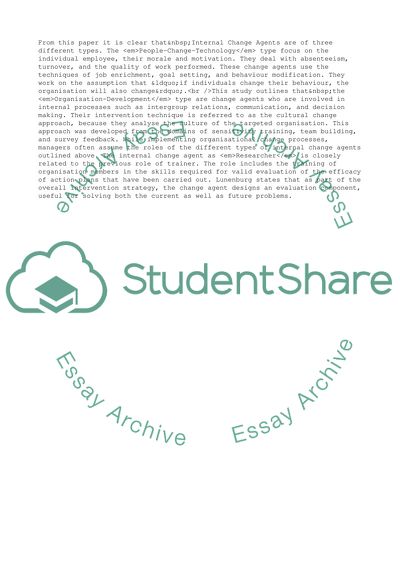Cite this document
(“The Role of the Internal Change Agent Essay Example | Topics and Well Written Essays - 2500 words”, n.d.)
Retrieved from https://studentshare.org/management/1394416-the-role-of-the-internal-change-agent
Retrieved from https://studentshare.org/management/1394416-the-role-of-the-internal-change-agent
(The Role of the Internal Change Agent Essay Example | Topics and Well Written Essays - 2500 Words)
https://studentshare.org/management/1394416-the-role-of-the-internal-change-agent.
https://studentshare.org/management/1394416-the-role-of-the-internal-change-agent.
“The Role of the Internal Change Agent Essay Example | Topics and Well Written Essays - 2500 Words”, n.d. https://studentshare.org/management/1394416-the-role-of-the-internal-change-agent.


